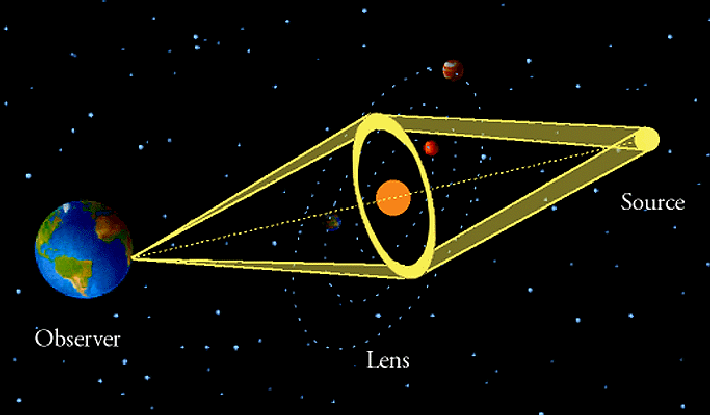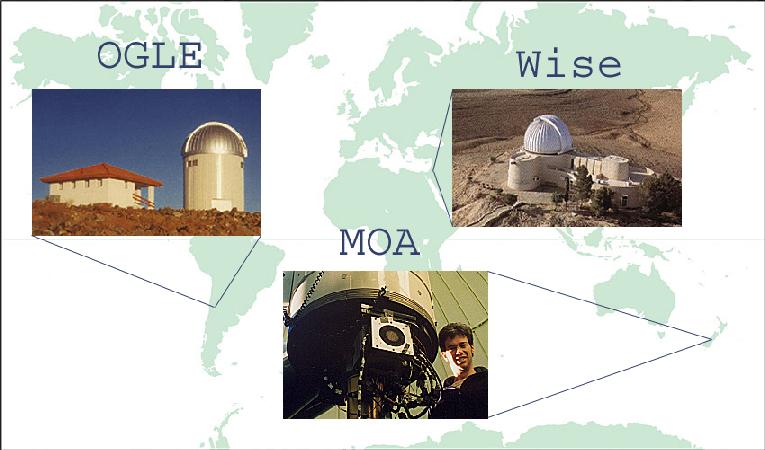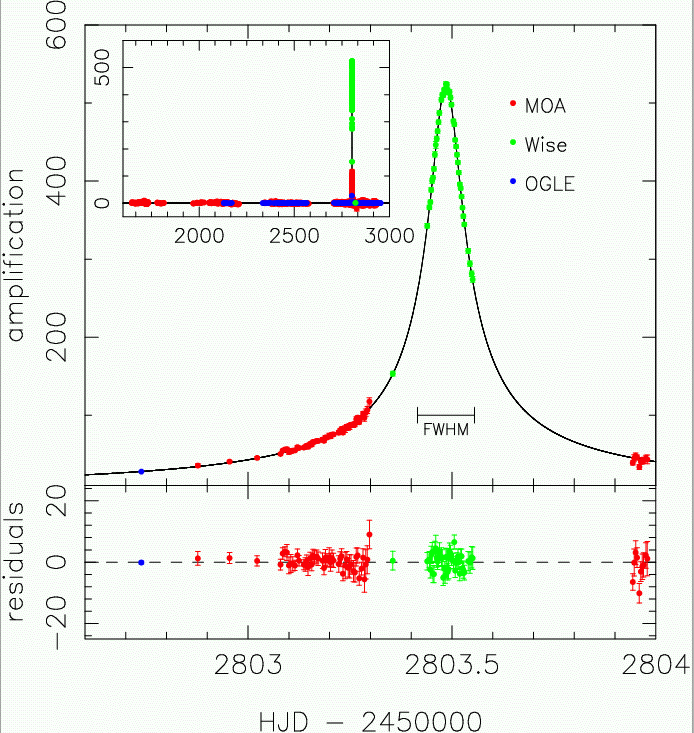
| During a microlensing event, two distant stars happen to line up almost exactly, one behind the other, as viewed from Earth. According to Einstein's Theory of General Relativity, the image of the background star is distorted by the gravitational field of the foreground star, which acts as a "gravitational lens", into an "Einstein ring". While the ring is too small to be resolved as such by existing telescopes, the phenomenon also involves amplification of the light from the background "source" star. The amplification progresses with time until it reaches a maximum at the closest projected separation of the two stars, and then decreases symmetrically. If the "lens star" happens to have planets around it, these will also contribute to the gravitational lensing effect, and will be seen as a asymmetric perturbation in the amplification light curve. The larger the amplification of the event, the greater the sensitivity to planets around the lens star. Under suitable conditions, Earth-mass planets can be detected this way. |
In an article published in Science the researchers show measurements of the microlensing event with the largest amplification reported to date. The light from the source, a star near the center of the Milky Way, at a distance of about 30,000 light years, was amplified by a factor of more than 500 over its normal brightness by the lensing effect of an intervening star. The high-amplification part of the event, during which the sensitivity to planets is highest, was covered only by the observations at Wise Observatory, during daytime in New Zealand and Chile. Observations at the other observatories were nonetheless essential, first of all for discovering the onset of the event (microlensing events are extremely rare, and can be found only by routinely monitoring the brightnesses of millions of stars), but also for establishing the "baseline" brightness of the source star.

The observed light curve of the event appears extremely smooth and symmetric, with no evidence for the presence of planets around the lens star. Indeed, the researchers show in their article that, if Earth-mass planets existed around the lens star in an annulus between 2-3 Earth-Sun distances, they would have been detected at about 50% probability. This is the first time that such a statement can be made about any star other than the Sun. In addition, more massive, Jupiter-like, planets, can be completely excluded over a very large region around the lens star. In terms of such giant planets, this is indeed a "lone star". But the main importance of this work has been the demonstration, in practice, of the viability of microlensing for detecting Earth-like planets. If such planets around other stars are common, they will be discovered in the foreseable future by means of similar upcoming high-amplification microlensing events.
